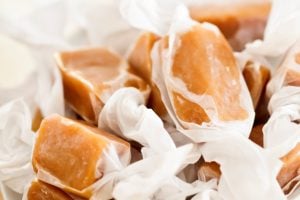The way life is carried on now seems near discovery (1953)
By Watson Davis, Director, Science Service – Rocky Mount Evening Telegram (North Carolina) December 24, 1953
Washington — One of the fundamental problems of living matter is the way life is handled on, that is, how the molecules that carry on heredity are duplicated within the cells. It seems to be near solution through a new chemical structure proposed for the substance that is most essential in the dividing cells involved in life of all varieties.
This sort of “chemical essence of life” is DNA, the full name of which is desoxyribonucleic acid. Its importance within living cells is today undisputed. The stature of this chemical has grown in the past year or two.
A suggested structure for this chemical, telling how the molecules that compose it are put together, is creating about as much interest and hopeful speculation in chemistry and biology as anything that has happened in many months.
For the mystery being solved is not alone how the stream of life of human beings, animals, plants and all other living things is carried on. It involves the multiplication of all cells and unites of living matter.
It is therefore basic to disease, such as cancer, which is unruly multiplication of cells. It may tell how unconquered viruses, recently photographed with the electron microscope, proliferate, which should be a step toward keeping them in hand.

Doctors Watson and Crick
DNA’s architects are two scientists working in the famous Cavendish Laboratory at Cambridge University, England, where so many important discoveries have been made over the decades.
One of them is Dr JD Watson, who has been working on a fellowship from the National Foundation for Infantile Paralysis supported by the March of Dimes in the United States. The other is Dr FHC Crick who has collaborated on the mathematical theory that protein molecules are wound into the shape of a helix or coiled spring. These two scientists are a part of Britain’s Medical Council unite “for the study of the molecular structure of biological systems.”
They have succeeded in working out a manner of construction of DNA that suggests how it can accomplish an exact duplication of itself.

This is something new. It may solve a major puzzle. DNA is found in all dividing cells, largely if not entirely in the nucleus. It is an essential constituent of the chromosomes, the parts of the cell in which the stuff of heredity is located.
Many lines of evidence indicate that DNA is the carrier of a part, if not all, of the genetic specificity of the chromosomes. Thus it is the chemical of the genes, the actual transmitting agent of all characteristics of the parents to their offspring. It is one of the world’s most important substances.
Incidentally, DNA is desoxyribonucleic acid in the United States, while the British drop the “s” and write it deoxyribonucleic acid.
The DNA molecule visualized
Far too minute to be ever seen with the most powerful microscopes, X-ray crystal studies give evidence to support the theoretical and mathematical ideas suggested.
The DNA molecule is a long chain. Its backbone consists of a regular alternation of sugar and phosphate groups. To each sugar is attached irregularly a nitrogenous base, which can be of four different types, two of which are purines, called adenine and guanine, and the others are pyrimidines, called thymine and cytosine. The unit consisting of phosphate, sugar, and base is called a nucleotide.
The structure has two chains both coiled around a common axis of the fiber. These two chains are held together by hydrogen bonds between the bases, and the bases are joined together in pairs. One member of the pair must be a purine and the other a pyrimidine in order to bridge between the two chains.
Any sequence of pairs of the bases can fit into the structure, and in a long molecule, many different permutations are possible. The Cavendish Laboratory scientists suggest that the precise sequence of the bases is the code which carries the genetical information.
One of the chains is the complement of the other. This feature suggests how the DNA molecule might duplicate itself.
In the process of duplication, it is visualized that the two chains unwind and separate. Each chain then acts as the model or template for the formation on itself of a new companion chain. There are two pairs of chains where there was only one pair before. There has been exact duplication, carrying the qualities of the original structure.
Answers and more questions
Enthusiastically, the scientists speculate on just how much these supposed happenings can explain. The unusual changes in heredity — are they due to one of the bases occasionally occurring in a less likely form? What makes the pair of chains unwind and separate? What is the chemical origin of the stuff of the crystal?
FIND OUT MORE: DNA SNPs: The basics of these genetic variations
This discussion is part of the great and inspiring push toward understanding the complexities of the materials of life.
Dr Linus Pauling and Dr Robert B Corey of the California Institute of Technology are solving the related problems of the structure of individual kinds of protein materials. The researchers and the ideas of one group aid those of another. Almost every issue of leading scientific journals adds new facts and theories. The most important chemicals of life are being better understood, and
The most important chemicals of life are being better understood, and man reaches for the very mystery of life.



















